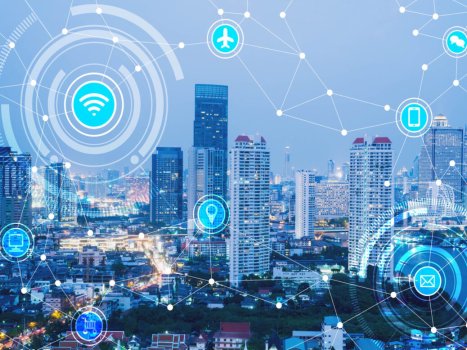K
Kathleen Martin
Guest
A few years ago, pre-Covid-19, there appeared to be an arms race beginning around smart cities. They had to be smarter and seemingly ever more ‘glossy’, driven by a need for sensors and data.
Then, as climate change became more evident, cities had to be sustainable, and of course, post-pandemic, more resilient. Now, in the wake of the fallout from the Ukraine-Russia conflict, they also need to be secure. So: smart, sustainable, resilient, and secure.
That message on smart city security coincides with a recent presentation from Lindy Cameron, the chief executive of The National Cyber Security Center, at Singapore International Cyber Week.
Connected technologies and smart cities
Cameron discussed the role of the Internet of Things (IoT) in creating a world that benefits from connected technologies, yet at the same time protects ‘connected places’—in other words; smart cities, safe from cyber threats.
She argued that the IoT is all about automation, connectivity, and efficiency, using them to improve our lives, boost our economies, and free our time to be more productive. That is a huge opportunity. It is also now a reality, and connected devices, from smart homes to smart cities, are now part of our everyday lives. Faced with this brand new world of technology, very few of us will willingly want to turn back the clock (beyond an hour at the appropriate weekend of the year!).
Cameron pointed out that both consumer and enterprise IoT has exploded over the last decade. There were 8.4 billion consumer devices connected to the internet in 2017 and it is estimated there will be 75 billion by 2025.
Continue reading: https://www.verdict.co.uk/smart-cities-arms-race/
Then, as climate change became more evident, cities had to be sustainable, and of course, post-pandemic, more resilient. Now, in the wake of the fallout from the Ukraine-Russia conflict, they also need to be secure. So: smart, sustainable, resilient, and secure.
That message on smart city security coincides with a recent presentation from Lindy Cameron, the chief executive of The National Cyber Security Center, at Singapore International Cyber Week.
Connected technologies and smart cities
Cameron discussed the role of the Internet of Things (IoT) in creating a world that benefits from connected technologies, yet at the same time protects ‘connected places’—in other words; smart cities, safe from cyber threats.
She argued that the IoT is all about automation, connectivity, and efficiency, using them to improve our lives, boost our economies, and free our time to be more productive. That is a huge opportunity. It is also now a reality, and connected devices, from smart homes to smart cities, are now part of our everyday lives. Faced with this brand new world of technology, very few of us will willingly want to turn back the clock (beyond an hour at the appropriate weekend of the year!).
Cameron pointed out that both consumer and enterprise IoT has exploded over the last decade. There were 8.4 billion consumer devices connected to the internet in 2017 and it is estimated there will be 75 billion by 2025.
Continue reading: https://www.verdict.co.uk/smart-cities-arms-race/

